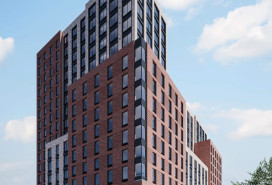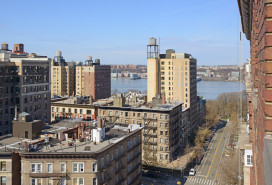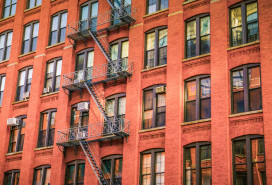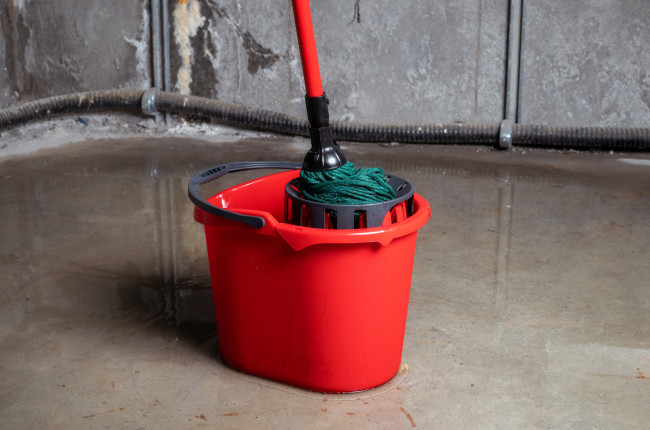What your landlord has to tell you about your apartment’s flood history
- A new NYC law requires landlords to disclose if your building was impacted by flooding in the past
- The law only applies to ‘natural flood events,’ so make sure to research previous tenants’ complaints

Make sure to research your apartment's past experience with flood so your living room doesn't become a pond.
iStock
If you’ve signed a lease in the last 28 days, you might have noticed a page that describes your building’s flood history. Or at least you should have.
Your landlord is required to provide you with a document outlining your building’s flood risk and history for all leases and renewals signed after June 21st, thanks to a new law signed by Governor Kathy Hochul last year.
The new rules provide a crucial advantage for renters, who were previously responsible for researching their building’s flood history, says New York State Assembly Member Robert Carroll, the law’s primary sponsor.
“Knowledge is power,” Carroll says. He represents parts of South Brooklyn from Park Slope down through Windsor Terrace to Midwood. “This kind of disclosure is going to give ample warning so that people can protect their property and protect themselves.”
The law requires rental leases to disclose if your building was damaged by a “natural flood”—such as one after heavy rainfall or storm surge—and whether it is located in a floodplain as defined by the Federal Emergency Management Agency (FEMA). Landlords are also required to inform you of where to get flood insurance through FEMA, as most renter’s insurance policies do not cover flood damage.
Read on for how to find your flood disclosure, and what to do if you find yourself in a flood zone.
What to look for in your lease
Your lease is likely to include a rider, a separate document outlining your building’s flood risk and insurance history. It should also specify whether your apartment building is located in a special flood hazard area—a region that has a 1 percent chance of experiencing a once-in-100-year flood in any given year—or if it’s located in moderate flood hazard area—which has a 0.2 percent chance of experiencing a once-in-500-year flood in any year.
While each landlord’s documents may look a little different, the NYC Housing Authority provides an example notice for all of its leases, though it hasn’t yet finalized the document:
NOTICE OF PROPOSED LEASE ADDENDUM- FLOOD RELATED DISCLOSURE
The New York City Housing Authority (NYCHA) plans to modify its lease as required by New York Real Property Law § 231-b by adding the following clause as paragraph 31 “Flood Related Disclosure” to NYCHA form 040.507 NYCHA Resident Lease Agreement. The proposed paragraph shall read as follows:
31. Flood Related Disclosure
a. The leased premises, or the building in which the leased premises are located:
(i) is ____ is not ____ located wholly or partially in a Federal Emergency Management Agency (FEMA) designated floodplain;
(ii) is ____ is not ____ located wholly or partially in the Special Flood Hazard Area (SFHA; 100-year floodplain) according to FEMA’s current Flood Insurance Rate Maps for the area;
(iii) is ____ is not ____ located wholly or partially in a Moderate Risk Flood Hazard Area (500-year floodplain) according to FEMA’s current Flood Insurance Rate Maps for the area;
(iv) has ____ has not ____ experienced prior flooding damage due to a natural flood event, such as heavy rainfall, coastal storm surge, tidal inundation, or river overflow. The nature of the prior flood damage is as follows: ______________.
Your landlord also might also elect to put their flood disclosure notice in the lease itself, though tacking on a rider is likely the better option, says Jonharold Cicero, a partner at real estate and corporate law firm DL Partners.
“[A rider] brings a tenant’s attention to the matter and really causes them to focus on what these regulatory requirements are,” Cicero says. “If you’re just stuffing in the body of the lease, a tenant might miss it.”
If your landlord does not provide you with a notice of your building’s flood history, they could be liable in civil court for flood-related damages to your property, Carroll says.
My building has a flood risk, what next?
If your apartment building has a history with flooding, you should dig deeper to find out how bad the problem is, particularly if you’re on a lower floor or in a basement unit.
You can check building reviews on websites like openigloo to see complaints from previous tenants. The Department of Buildings website (or the Building Information System for complaints before 2021) are two useful resources for finding past residents’ complaints on a property as well.
You can also look into whether your building sits on an underground river, which can cause water to seep into your basement. (And if it does, here’s Brick’s best advice for dealing with it.)
Regardless of a flood disclosure, it is always good advice to look into your building’s history, since the new state law does not cover floods that arise from a building’s plumbing failures. Plus, a little extra research can clue you into other problems, says Allia Mohamed, CEO and co-founder of openigloo.
“We're always encouraging renters to do research on all fronts, not just on flooding, but on bed bugs, pest control and garbage management,” Mohamed says.
You should also check your renter’s insurance policy to see if it covers flood, and consider purchasing additional insurance coverage if it doesn’t, says Furhana Husani, the director of programs and climate initiatives at the Waterfront Alliance. FEMA offers insurance through its National Flood Insurance Program that ranges in price based on your location. The average cost of an NFIP policy is $739 a year in the United States, according to NerdWallet’s calculations.
You can also ask your landlord to make a handful of building changes to improve your neighborhood’s flood resistance, especially as climate change worsens coastal floods, Husani says. (The city will even partially pay for buildings to install water-absorbing greenery on their roofs).
“Because of climate change, we’re going to see a lot more flooding unfortunately in the coming years,” Husani says. “It’s going to continue to be a big issue and we really do need to ensure that our residents are protected.”
You Might Also Like

























